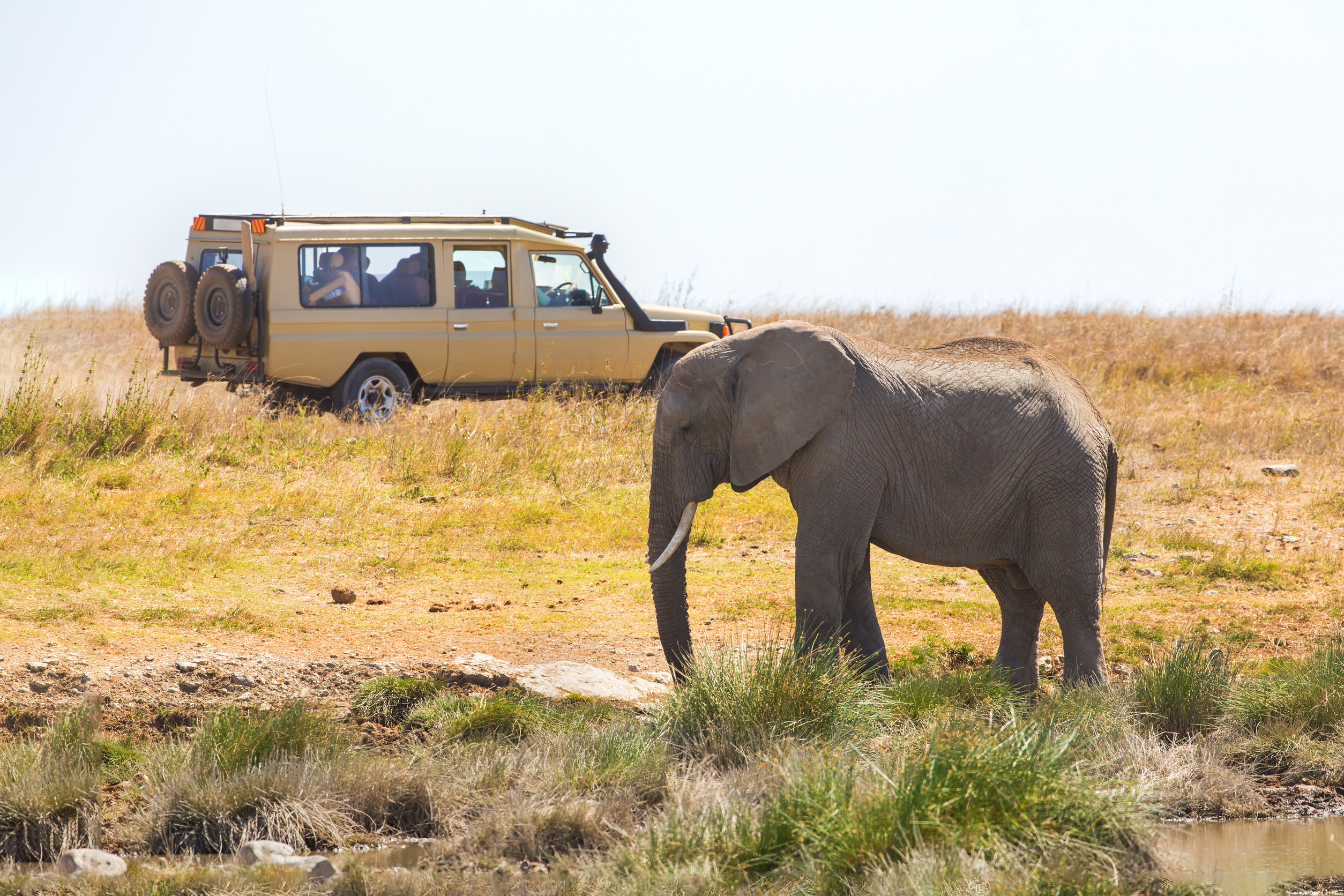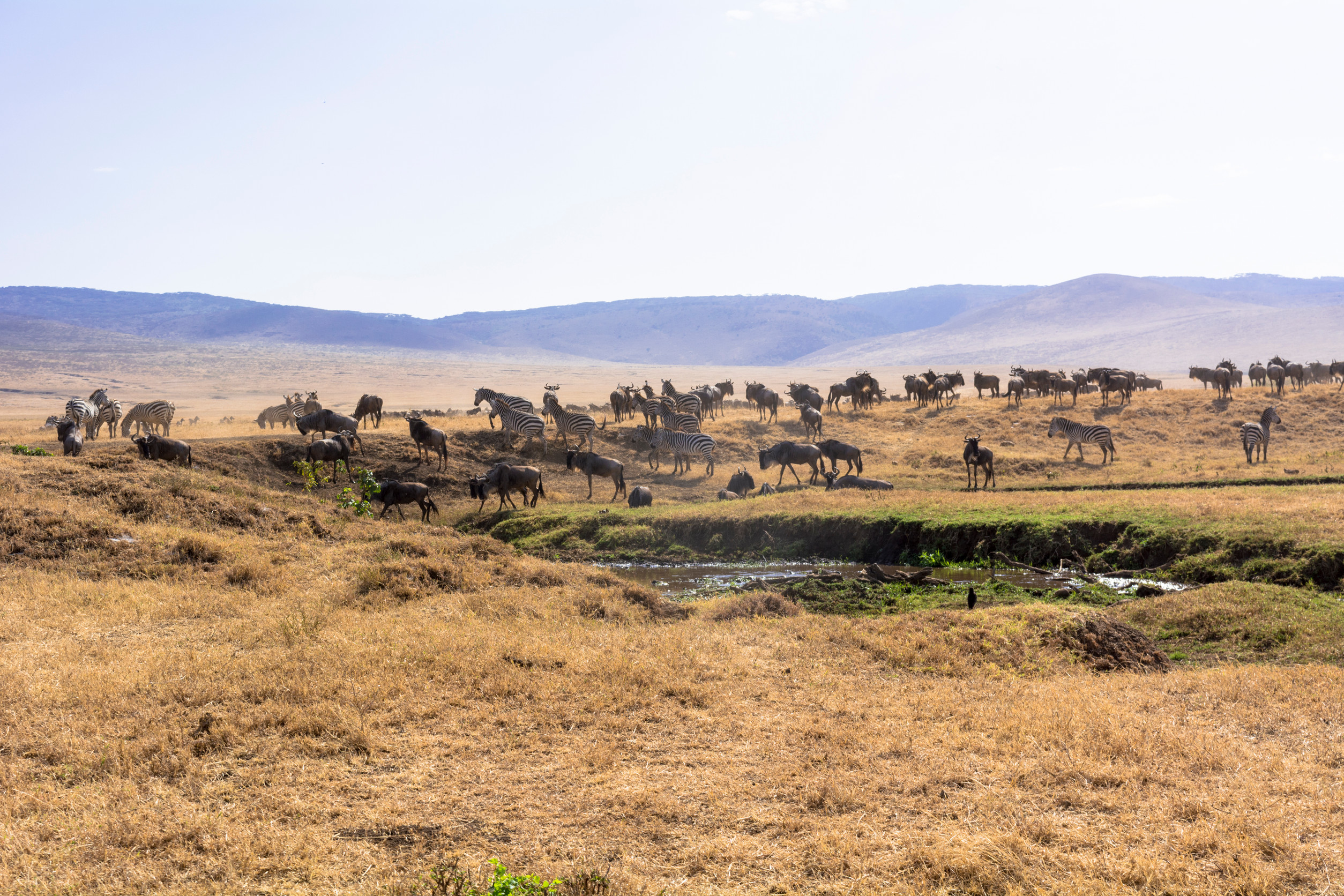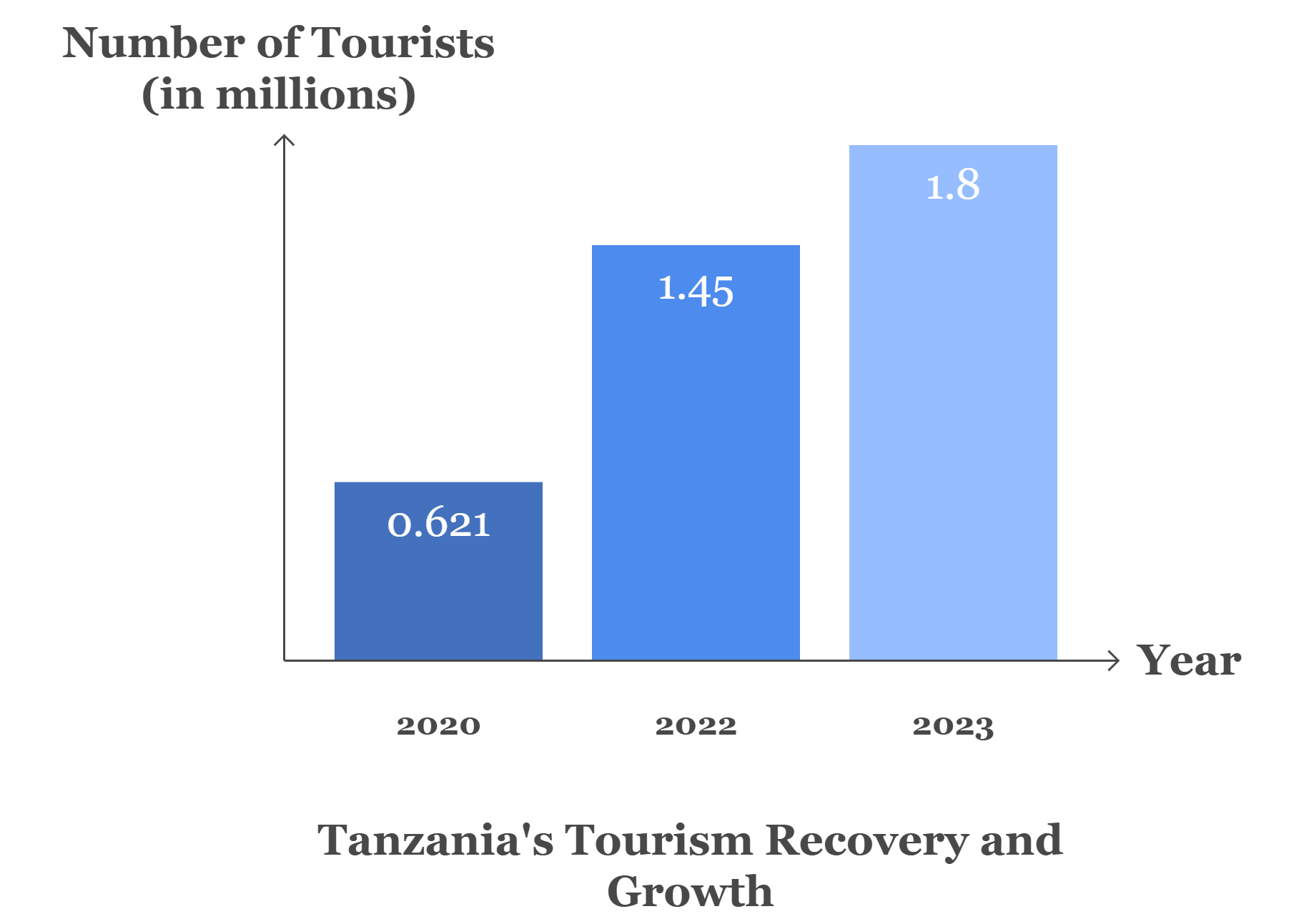
Tanzania has long been recognized as one of Africa’s top tourist destinations, attracting millions of visitors to its breathtaking landscapes, rich wildlife, and vibrant cultural heritage. From the Serengeti’s Great Migration and the towering Mount Kilimanjaro to the pristine beaches of Zanzibar, the country offers diverse experiences that appeal to nature lovers, adventure seekers, and cultural explorers alike. However, the success of Tanzania’s tourism sector has not been accidental—it is the result of visionary leadership, strategic planning, and sustained conservation efforts over decades.
The Foundation of Tanzania’s Tourism Sector
The tourist industry in Tanzania traces its origins back to the early 1960s when Tanzania was independent. The earliest and most significant milestone in the evolution of the industry was the Arusha Manifesto of 1961, signed by Tanzania's first president. The manifesto placed significant importance on wildlife conservation to the extent that it stated Tanzania's natural heritage was not only a national treasure but a gift to humanity. This declaration opened the door to conservation policies that have since grown the country's tourism sector.
Following independence, the government intervened actively in building tourism infrastructure. In 1964, the National Development Corporation (NDC) was set up with a view to investing in the hotel industry, and hotels and lodges were thus constructed. In 1969, the Tanzania Tourist Corporation (TTC) was formed to promote tourism both locally and abroad.
Expansion and Development of Tourism Infrastructure

Despite its early focus on conservation, Tanzania’s tourism infrastructure remained underdeveloped in the 1970s due to economic challenges. However, major milestones included:
- Creation of National Parks and Reserves: Today, Tanzania dedicates 32.5% of its land to protected areas, including 21 national parks, 26 game reserves, and the Ngorongoro Conservation Area.
- Opening of Kilimanjaro International Airport (1971): This provided easier access to international visitors and boosted the tourism sector.
- Government-Owned Tourist Services: Under the socialist policies of Ujamaa (self-reliance), the state played a central role in running hotels and tour services.
Transition to a Free-Market Economy and Tourism Growth
By the mid-1980s, Tanzania had become a free-market economy, and the tourism sector was opened to private investment and competition. This transformation brought significant changes that helped shape Tanzania's modern tourism industry.
Privatization of State-Owned Enterprises
The privatization of hotels and lodges in the 1980s improved service quality, encouraged competition, and attracted diverse tourists. Private investment led to luxury resorts, eco-lodges, and budget hotels, enhancing Tanzania’s global appeal.
Establishment of the Tanzania Tourist Board (TTB) in 1992
Replacing the Tanzania Tourist Corporation, TTB promoted Tanzania internationally through advertising, travel expos, and tour operator collaborations. This boosted tourist arrivals and highlighted Tanzania’s wildlife, culture, and beaches.
Introduction of Tourism Policies
The 1991 National Tourism Policy (revised in 1999) encouraged private sector involvement, infrastructure growth, and sustainable tourism. It boosted competition, conservation efforts, and economic contributions, solidifying Tanzania’s tourism sector.
Public-Private Partnerships and International Recognition
By the early 2000s, Tanzania experienced rapid growth in international tourist arrivals. Collaborative efforts between the government and private stakeholders contributed to:
- Increased international airline connectivity: Airlines such as Qatar Airways, Ethiopian Airlines, and KLM expanded their routes to Tanzania.
- Investment in luxury and eco-tourism lodges: High-end safari camps and lodges in the Serengeti, Ngorongoro, and Zanzibar attracted high-value tourists.
- Cultural and community-based tourism initiatives: Programs in places like Maasai villages and Bagamoyo enhanced cultural tourism experiences.
By 2012, Tanzania welcomed over 1 million international visitors, and by 2019, arrivals surpassed 1.5 million, generating $2.6 billion in revenue.
Tourism Challenges and the COVID-19 Impact in Tanzania
Despite steady growth, Tanzania’s tourism sector faced challenges, particularly:
- COVID-19 Pandemic (2020-2022): International travel restrictions led to a sharp decline in arrivals, dropping to 621,000 visitors in 2020.
- Environmental Concerns: Unregulated tourism in sensitive ecosystems posed risks to wildlife and habitats.
- Infrastructure Gaps: Limited road networks and high domestic flight costs made access to some tourist destinations difficult.
Tourism Recovery in Tanzania
Since assuming office in 2021, the President has implemented strategic initiatives to revive and strengthen Tanzania’s tourism sector. These efforts have been instrumental in helping the industry recover from the COVID-19 pandemic and positioning Tanzania as a leading destination for global travelers. Below are the key areas of focus in the country’s tourism recovery strategy:
1. Global Marketing Campaigns
One of the most notable efforts to revitalize Tanzania’s tourism sector has been its aggressive international marketing campaigns. The government recognized the need to boost the country’s global image and attract more visitors through:
- The Royal Tour Documentary (2022): President Samia personally participated in this U.S.-produced documentary, guiding viewers through Tanzania’s top attractions such as the Serengeti, Ngorongoro Crater, Mount Kilimanjaro, and Zanzibar. This unique approach helped showcase Tanzania’s diverse tourism offerings to an international audience, leading to increased interest from travelers.
- Amazing Tanzania Documentary (2023): Building on the success of The Royal Tour, this documentary was produced to further highlight Tanzania’s hidden gems, including lesser-known wildlife parks, cultural experiences, and eco-tourism destinations.
- Increased Participation in International Tourism Fairs: Tanzania actively participated in global tourism expos, including the World Travel Market (WTM) in London, the ITB Berlin travel trade show, and the Indaba Tourism Expo in South Africa. These events helped promote Tanzania to travel agencies, investors, and international tourists.
- Celebrity and Influencer Endorsements: The government also collaborated with travel influencers, content creators, and travel agencies to promote Tanzania on digital platforms, increasing its visibility.
These marketing efforts contributed significantly to Tanzania’s rapid tourism recovery, drawing visitors back to the country after pandemic-related declines.
2. Strengthening Tourism Infrastructure in Tanzania
Appreciating the role of infrastructure in propelling tourism growth, Tanzania has invested much in upgrading transport and connectivity to increase foreign and domestic visitor accessibility. Major airports like Julius Nyerere International Airport (JNIA) and Kilimanjaro International Airport (KIA) have been upgraded to improve capacity and passenger comfort. Domestic airports like Abeid Amani Karume International Airport in Zanzibar and Mwanza Airport have been upgraded to accommodate tourism growth. The turnaround of Air Tanzania has expanded air connections to major world cities, and enhanced domestic linkages now join major tourist centers such as Arusha, Zanzibar, and the Serengeti. Road infrastructure to renowned destinations such as Serengeti and Ruaha National Parks has been enhanced to facilitate travel. These have helped Tanzania's position as a world-class tourism destination exponentially.
3. Sustainable Tourism Development
To ensure that the development of tourism is also beneficial to the people and the environment, Tanzania has prioritized sustainable tourism. The government has dedicated 32.5% of the country to protected areas, increased anti-poaching efforts, and partnered with organizations like TANAPA to finance conservation. Eco-tourism is promoted through environmentally friendly lodges, walking safaris, and cultural tourism in Maasai villages. Apart from this, the local communities are also involved in tourism by small business promotion and cultural tourism development in places like Bagamoyo and Zanzibar, where they directly benefit from the sector. These projects place Tanzania among leaders in responsible tourism
Tourism Recovery Success: Record-Breaking Visitor Numbers
Thanks to these strategic initiatives, Tanzania has experienced a strong recovery in its tourism sector:
- In 2020, during the COVID-19 pandemic, tourist arrivals dropped to 621,000 due to global travel restrictions.
- By 2022, arrivals had rebounded to 1.45 million visitors, showing significant recovery.
- By 2023, Tanzania welcomed 1.8 million international visitors, surpassing pre-pandemic levels.
- The country generated $ billion in tourism revenue, making it one of the leading economic sectors contributing to Tanzania’s GDP and employment growth.

The Future of Tanzania’s Tourism Industry
Looking ahead, Tanzania aims to position itself as a top-five tourist destination in Africa by focusing on:
- Diversifying Tourism Products: Promoting eco-tourism, adventure tourism, cultural heritage tours, and marine tourism beyond traditional safaris.
- Enhancing Digital Transformation: Implementing Tanzania e-visa services and online booking platforms to streamline the tourist experience.
- Strengthening Conservation Efforts: Expanding protected areas and promoting responsible tourism to preserve biodiversity.
With strong leadership, strategic investments, and a commitment to conservation, Tanzania’s tourism sector is poised for continued growth, ensuring that its natural and cultural treasures remain a source of economic prosperity for future generations.
Conclusion
Tanzania’s tourism legacy is a testament to visionary leadership, policy reforms, and long-term investments in conservation and infrastructure. From the Arusha Manifesto of 1961 to the modern tourism boom under President Samia Suluhu Hassan, the country has transformed into a world-class destination. By sustaining these efforts, Tanzania is well on its way to securing a thriving and sustainable tourism industry for decades to come.